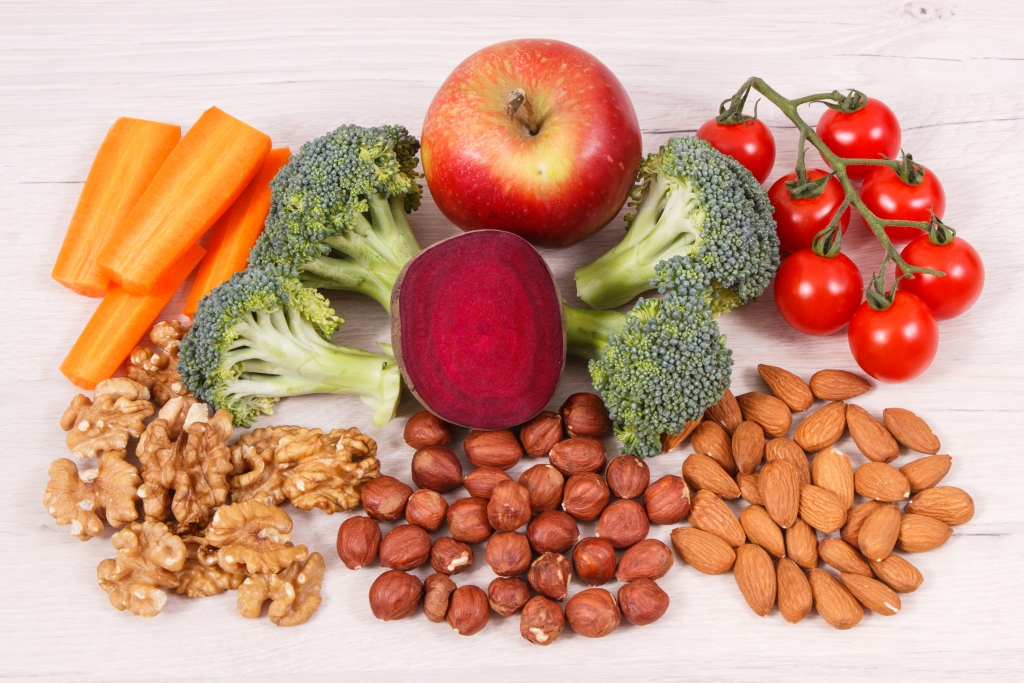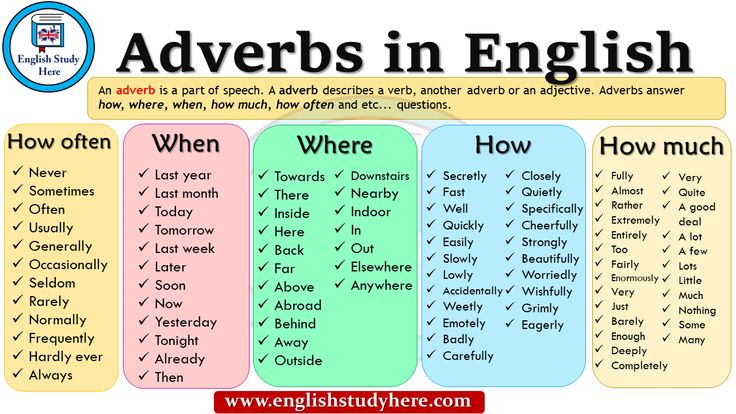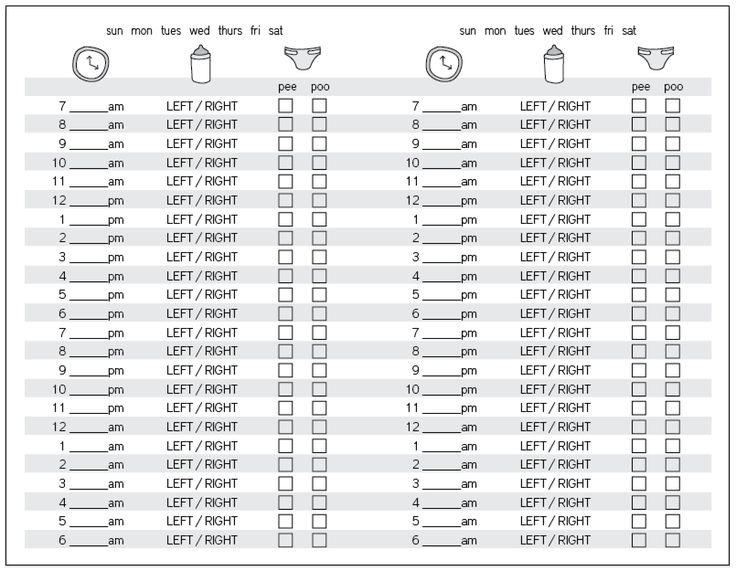Newborn baby feeding cycle
Tips for the First Year
Every baby may get hungry on their own unique schedule. That said, most infants in the first months of life will eat every 2-4 hours, depending if they are nursing or drinking formula. Once they eat solids, they’ll gradually drink less.
Eat, sleep, pee, poop, repeat. Those are the highlights of a day of the life of a brand-new baby.
And if you’re a new parent, it’s the eating part that may be the source of many of your questions and worries. How many ounces should your baby take? Do you wake a sleeping baby to eat? Why do they seem hungry all the time? When can your child start solids?
Questions abound — despite Grandma’s insistence, the answers have changed since you were a tot. It’s now recommended that newborns, even formula-fed ones, eat on demand (consider it good preparation for the teenage years) and that babies wait to start solid foods until they’re 4 to 6 months old.
On day one of life, your baby’s stomach is the size of a marble and can only hold 1 to 1. 4 teaspoons of liquid at a time. As your baby gets older, their stomach stretches and grows.
It’s hard (or impossible, really) to know how much milk your baby is taking in while breastfeeding. But if you’re bottle feeding due to any number of valid reasons, it’s a bit easier to measure.
Here, from the American Academy of Pediatrics (AAP), a typical feeding schedule for bottle-fed babies.
| Age | Ounces per feeding | Solid foods |
|---|---|---|
| Up to 2 weeks of life | .5 oz. in the first days, then 1–3 oz. | No |
| 2 weeks to 2 months | 2–4 oz. | No |
| 2–4 months | 4-6 oz. | No |
| 4–6 months | 4–8 oz. | Possibly, if your baby can hold their head up and is at least 13 pounds. But you don’t need to introduce solid foods yet. |
| 6–12 months | 8 oz. | Yes. Start with soft foods, like one-grain cereals and pureed vegetables, meats, and fruits, progressing to mashed and well-chopped finger foods. Give your baby one new food at a time. Continue supplementing with breast or formula feedings. Give your baby one new food at a time. Continue supplementing with breast or formula feedings. |
Every baby is unique — but one thing that’s pretty consistent is that breastfed babies eat more frequently than bottle-fed ones. That’s because breast milk is easily digested and empties from the stomach a lot quicker than formula.
Breastfed babies
There’s no rest for the weary. According to La Leche League International, you should begin nursing your baby within 1 hour of birth and provide about 8 to 12 feedings daily in the first few weeks of life (yeah, we’re exhausted for you).
At first, it’s important not to let your baby go more than 4 hours without feeding. You’ll likely need to wake them up if necessary, at least until breastfeeding is well established and they’re gaining weight appropriately.
As your baby grows and your milk supply amps up, your baby will be able to take in more milk in less time at one feeding. That’s when you might start to notice a more predictable pattern.
- 1 to 3 months: Your baby will feed 7 to 9 times per 24 hours.
- 3 months: Feedings take place 6 to 8 times in 24 hours.
- 6 months: Your baby will feed around 6 times a day.
- 12 months: Nursing may drop to about 4 times a day. The introduction of solids at about 6 months helps to fuel your baby’s additional nutritional needs.
Keep in mind that this pattern is just one example. Different babies have different paces and preferences, along with other factors that influence the frequency of feedings.
Bottle-fed babies
Like breastfed babies, bottle-fed newborns should eat on demand. On average, that’s about every 2 to 3 hours. A typical feeding schedule may look like this:
- Newborn: every 2 to 3 hours
- At 2 months: every 3 to 4 hours
- At 4 to 6 months: every 4 to 5 hours
- At 6+ months: every 4 to 5 hours
For both breastfed and bottle-fed babies
- Don’t give liquids other than formula or breast milk to babies under a year old.
 That includes juices and cow’s milk. They don’t provide the right (if any) nutrients and can be upsetting to your baby’s tummy. Water can be introduced around 6 months when you start offering a cup.
That includes juices and cow’s milk. They don’t provide the right (if any) nutrients and can be upsetting to your baby’s tummy. Water can be introduced around 6 months when you start offering a cup. - Don’t add baby cereal to a bottle.
- It can create a choking hazard.
- A baby’s digestive system isn’t mature enough to handle cereal until about 4 to 6 months of age.
- You could overfeed your baby.
- Don’t give your baby any form of honey until after their first birthday. Honey can be dangerous for a baby, occasionally causing what’s called infant botulism.
- Do adjust your expectations based on your baby and their unique needs. Premature babies are likely to follow feeding patterns according to their adjusted age. If your baby has challenges like reflux or failure to thrive, you may need to work with your doctor on the appropriate feeding schedule and amount they should be eating.
Schedules are the holy grail of every parent. Your child will naturally start to fall into a feeding pattern as their tummy grows and they can take in more breast milk or formula at one sitting.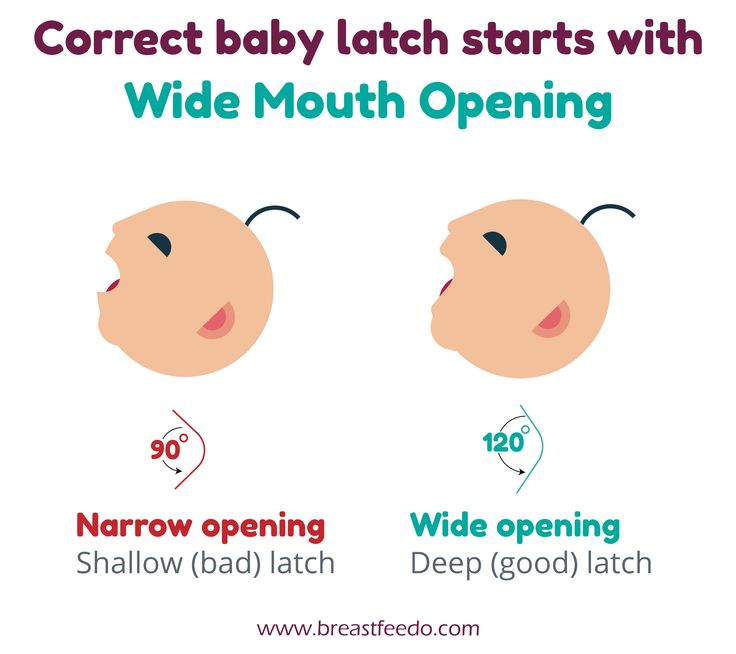 This may begin to happen between 2 and 4 months of age.
This may begin to happen between 2 and 4 months of age.
For now, though, focus on learning your baby’s hunger cues, such as:
- rooting around your chest, looking for a nipple.
- putting their fist in their mouth
- smacking or licking their lips
- fussing that can escalate quickly (don’t wait until your baby’s hangry to feed them)
Once your baby is a few months old, you may be able to introduce a sleep/feed schedule that works for you.
Let’s say, for example, your 4-month-old wakes every 5 hours for a feeding. That means if you feed at 9 p.m., your baby wakes around 2 a.m. But if you wake and feed the baby at 11 p.m., just before you go to bed, they may not rouse until 4 a.m., giving you a decent chunk of nighttime winks.
In general, if your baby seems hungry, feed them. Your baby will naturally eat more frequently during growth spurts, which typically occur around 3 weeks, 3 months, and 6 months of age.
Some babies will also “cluster feed,” meaning they’ll feed more frequently during certain periods and less at others. For example, your baby may cluster feed during the late afternoon and evening and then sleep longer at night (yay!). This is more common in breastfed babies than bottle fed babies.
For example, your baby may cluster feed during the late afternoon and evening and then sleep longer at night (yay!). This is more common in breastfed babies than bottle fed babies.
Worried about overfeeding? While this isn’t really possible to do with an exclusively breastfed baby, you can overfeed a baby who’s taking a bottle — especially if they’re sucking on the bottle for comfort. Follow their hunger cues, but talk to your pediatrician if you’re worried your little one may be overeating.
Your baby is probably ready for solids if they’re 4 to 6 months old and:
- have good head control
- seem interested in what you’re eating
- reach for food
- weigh 13 or more pounds
Which food to start with? The AAP now says it doesn’t really matter much in what order you introduce foods. The only real rule: Stick with one food for 3 to 5 days before offering another. If there’s an allergic reaction (rash, diarrhea, vomiting are common first signs), you’ll know which food is causing it.
As your baby grows, move from pureed baby food to ones that have more texture (for example, mashed banana, scrambled egg, or well-cooked, chopped pasta). This generally happens around 8 to 10 months of age.
Your supermarket offers a variety of baby food products, but if you want to make your own, keep it sugar and salt free. Additionally, at this stage, don’t feed your baby anything that could be a choking hazard, including:
- hard foods, such as popcorn or nuts
- hard, fresh fruits, like apples; cook to soften or chop into very small pieces
- any meat that isn’t well cooked and very well chopped (this includes hot dogs)
- cheese cubes
- peanut butter (though talk to your pediatrician about this one — and the benefits of introducing diluted peanut butter before the age of 1)
As your baby nears their first birthday, they should be eating a variety of foods and taking in about 4 ounces of solids at each meal. Continue to offer breast milk or formula. By 8 months, babies are drinking about 30 ounces a day.
By 8 months, babies are drinking about 30 ounces a day.
Oh yeah, and buy some stock in a company that makes stain-fighting laundry detergent. It’ll pay for college.
Babies aren’t cookie cutter. Some will gain weight easily, while others will have problems. Things that can affect a baby’s weight gain include:
- having a birth defect like a cleft lip or palate, which creates problems feeding
- having a milk protein intolerance
- being premature
- being fed with a bottle versus the breast
A 2012 study of more than 1,800 babies found that the infants who were fed with a bottle — regardless of whether the bottle contained breast milk or formula — gained more weight in the first year than babies who nursed exclusively.
Your baby’s doctor is the best one to advise you on a healthy weight range for your baby.
How, when, and what to feed a baby are top worries of every parent — but there’s good news: Most babies are pretty good judges of when they’re hungry and when they’re full — and they’ll let you know it.
You just need to present them with the right choices at the right time and pay attention to their cues. If you have any questions or concerns, your pediatrician is there to help you along the way.
Tips for the First Year
Every baby may get hungry on their own unique schedule. That said, most infants in the first months of life will eat every 2-4 hours, depending if they are nursing or drinking formula. Once they eat solids, they’ll gradually drink less.
Eat, sleep, pee, poop, repeat. Those are the highlights of a day of the life of a brand-new baby.
And if you’re a new parent, it’s the eating part that may be the source of many of your questions and worries. How many ounces should your baby take? Do you wake a sleeping baby to eat? Why do they seem hungry all the time? When can your child start solids?
Questions abound — despite Grandma’s insistence, the answers have changed since you were a tot. It’s now recommended that newborns, even formula-fed ones, eat on demand (consider it good preparation for the teenage years) and that babies wait to start solid foods until they’re 4 to 6 months old.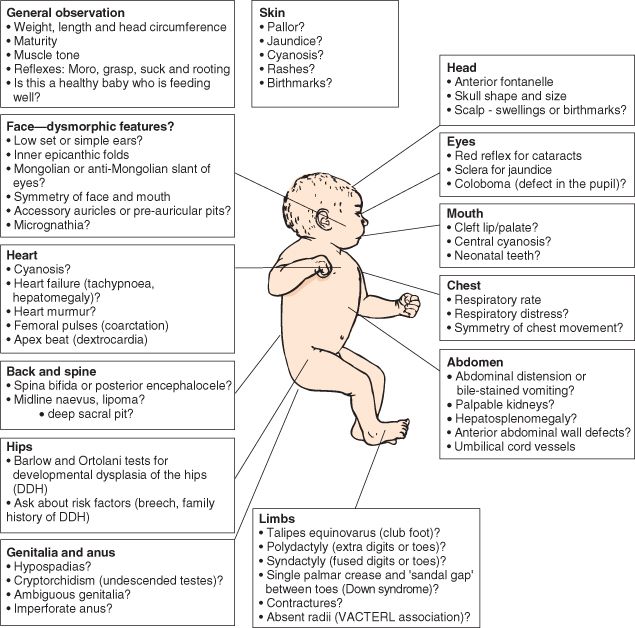
On day one of life, your baby’s stomach is the size of a marble and can only hold 1 to 1.4 teaspoons of liquid at a time. As your baby gets older, their stomach stretches and grows.
It’s hard (or impossible, really) to know how much milk your baby is taking in while breastfeeding. But if you’re bottle feeding due to any number of valid reasons, it’s a bit easier to measure.
Here, from the American Academy of Pediatrics (AAP), a typical feeding schedule for bottle-fed babies.
| Age | Ounces per feeding | Solid foods |
|---|---|---|
| Up to 2 weeks of life | .5 oz. in the first days, then 1–3 oz. | No |
| 2 weeks to 2 months | 2–4 oz. | No |
| 2–4 months | 4-6 oz. | No |
| 4–6 months | 4–8 oz. | Possibly, if your baby can hold their head up and is at least 13 pounds. But you don’t need to introduce solid foods yet. |
| 6–12 months | 8 oz. | Yes. Start with soft foods, like one-grain cereals and pureed vegetables, meats, and fruits, progressing to mashed and well-chopped finger foods. Give your baby one new food at a time. Continue supplementing with breast or formula feedings. |
Every baby is unique — but one thing that’s pretty consistent is that breastfed babies eat more frequently than bottle-fed ones. That’s because breast milk is easily digested and empties from the stomach a lot quicker than formula.
Breastfed babies
There’s no rest for the weary. According to La Leche League International, you should begin nursing your baby within 1 hour of birth and provide about 8 to 12 feedings daily in the first few weeks of life (yeah, we’re exhausted for you).
At first, it’s important not to let your baby go more than 4 hours without feeding. You’ll likely need to wake them up if necessary, at least until breastfeeding is well established and they’re gaining weight appropriately.
As your baby grows and your milk supply amps up, your baby will be able to take in more milk in less time at one feeding. That’s when you might start to notice a more predictable pattern.
- 1 to 3 months: Your baby will feed 7 to 9 times per 24 hours.
- 3 months: Feedings take place 6 to 8 times in 24 hours.
- 6 months: Your baby will feed around 6 times a day.
- 12 months: Nursing may drop to about 4 times a day. The introduction of solids at about 6 months helps to fuel your baby’s additional nutritional needs.
Keep in mind that this pattern is just one example. Different babies have different paces and preferences, along with other factors that influence the frequency of feedings.
Bottle-fed babies
Like breastfed babies, bottle-fed newborns should eat on demand. On average, that’s about every 2 to 3 hours. A typical feeding schedule may look like this:
- Newborn: every 2 to 3 hours
- At 2 months: every 3 to 4 hours
- At 4 to 6 months: every 4 to 5 hours
- At 6+ months: every 4 to 5 hours
For both breastfed and bottle-fed babies
- Don’t give liquids other than formula or breast milk to babies under a year old.
 That includes juices and cow’s milk. They don’t provide the right (if any) nutrients and can be upsetting to your baby’s tummy. Water can be introduced around 6 months when you start offering a cup.
That includes juices and cow’s milk. They don’t provide the right (if any) nutrients and can be upsetting to your baby’s tummy. Water can be introduced around 6 months when you start offering a cup. - Don’t add baby cereal to a bottle.
- It can create a choking hazard.
- A baby’s digestive system isn’t mature enough to handle cereal until about 4 to 6 months of age.
- You could overfeed your baby.
- Don’t give your baby any form of honey until after their first birthday. Honey can be dangerous for a baby, occasionally causing what’s called infant botulism.
- Do adjust your expectations based on your baby and their unique needs. Premature babies are likely to follow feeding patterns according to their adjusted age. If your baby has challenges like reflux or failure to thrive, you may need to work with your doctor on the appropriate feeding schedule and amount they should be eating.
Schedules are the holy grail of every parent. Your child will naturally start to fall into a feeding pattern as their tummy grows and they can take in more breast milk or formula at one sitting.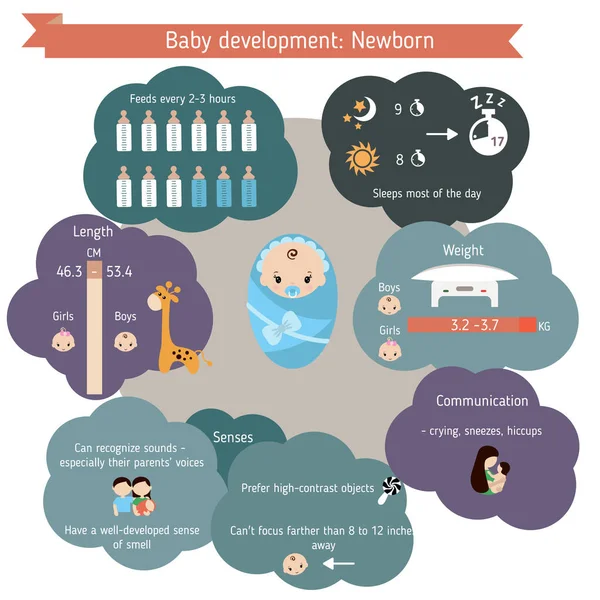 This may begin to happen between 2 and 4 months of age.
This may begin to happen between 2 and 4 months of age.
For now, though, focus on learning your baby’s hunger cues, such as:
- rooting around your chest, looking for a nipple.
- putting their fist in their mouth
- smacking or licking their lips
- fussing that can escalate quickly (don’t wait until your baby’s hangry to feed them)
Once your baby is a few months old, you may be able to introduce a sleep/feed schedule that works for you.
Let’s say, for example, your 4-month-old wakes every 5 hours for a feeding. That means if you feed at 9 p.m., your baby wakes around 2 a.m. But if you wake and feed the baby at 11 p.m., just before you go to bed, they may not rouse until 4 a.m., giving you a decent chunk of nighttime winks.
In general, if your baby seems hungry, feed them. Your baby will naturally eat more frequently during growth spurts, which typically occur around 3 weeks, 3 months, and 6 months of age.
Some babies will also “cluster feed,” meaning they’ll feed more frequently during certain periods and less at others. For example, your baby may cluster feed during the late afternoon and evening and then sleep longer at night (yay!). This is more common in breastfed babies than bottle fed babies.
For example, your baby may cluster feed during the late afternoon and evening and then sleep longer at night (yay!). This is more common in breastfed babies than bottle fed babies.
Worried about overfeeding? While this isn’t really possible to do with an exclusively breastfed baby, you can overfeed a baby who’s taking a bottle — especially if they’re sucking on the bottle for comfort. Follow their hunger cues, but talk to your pediatrician if you’re worried your little one may be overeating.
Your baby is probably ready for solids if they’re 4 to 6 months old and:
- have good head control
- seem interested in what you’re eating
- reach for food
- weigh 13 or more pounds
Which food to start with? The AAP now says it doesn’t really matter much in what order you introduce foods. The only real rule: Stick with one food for 3 to 5 days before offering another. If there’s an allergic reaction (rash, diarrhea, vomiting are common first signs), you’ll know which food is causing it.
As your baby grows, move from pureed baby food to ones that have more texture (for example, mashed banana, scrambled egg, or well-cooked, chopped pasta). This generally happens around 8 to 10 months of age.
Your supermarket offers a variety of baby food products, but if you want to make your own, keep it sugar and salt free. Additionally, at this stage, don’t feed your baby anything that could be a choking hazard, including:
- hard foods, such as popcorn or nuts
- hard, fresh fruits, like apples; cook to soften or chop into very small pieces
- any meat that isn’t well cooked and very well chopped (this includes hot dogs)
- cheese cubes
- peanut butter (though talk to your pediatrician about this one — and the benefits of introducing diluted peanut butter before the age of 1)
As your baby nears their first birthday, they should be eating a variety of foods and taking in about 4 ounces of solids at each meal. Continue to offer breast milk or formula.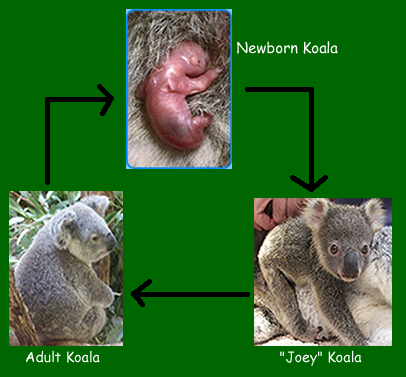 By 8 months, babies are drinking about 30 ounces a day.
By 8 months, babies are drinking about 30 ounces a day.
Oh yeah, and buy some stock in a company that makes stain-fighting laundry detergent. It’ll pay for college.
Babies aren’t cookie cutter. Some will gain weight easily, while others will have problems. Things that can affect a baby’s weight gain include:
- having a birth defect like a cleft lip or palate, which creates problems feeding
- having a milk protein intolerance
- being premature
- being fed with a bottle versus the breast
A 2012 study of more than 1,800 babies found that the infants who were fed with a bottle — regardless of whether the bottle contained breast milk or formula — gained more weight in the first year than babies who nursed exclusively.
Your baby’s doctor is the best one to advise you on a healthy weight range for your baby.
How, when, and what to feed a baby are top worries of every parent — but there’s good news: Most babies are pretty good judges of when they’re hungry and when they’re full — and they’ll let you know it.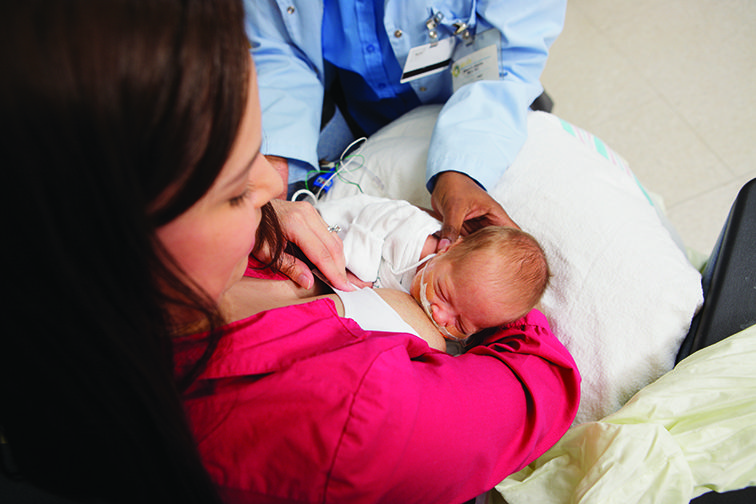
You just need to present them with the right choices at the right time and pay attention to their cues. If you have any questions or concerns, your pediatrician is there to help you along the way.
The period of breastfeeding is one of the most important stages in a child's life
The period of breastfeeding is one of the most important stages in a child's life, which can be regarded as a transitional period from intrauterine development to a full-fledged independent existence.
Man is born completely dependent on his mother, and nature has provided for the possibility of transferring all the necessary nutrients to the child through mother's milk.
The best food for a baby is the milk of his own mother, and this is understandable. The fact is that during pregnancy, the child and mother are practically a single organism, and it is very dangerous for the baby to lose this connection immediately, from the first minutes after birth. No wonder it is often said that 9months of pregnancy and at least 9 months of breastfeeding - this is the full cycle of "carrying" the baby, necessary for its proper growth and development, as well as for the normal state of the mother.
So why is breastfeeding so important?
First of all, mother's milk is the best food for a baby. The mother's body produces milk with exactly the properties that are necessary for a particular newborn - different women have slightly different composition of breast milk, adapted to meet the needs of her baby.
Mother's milk also changes its properties as the child grows. Often women try to "check" if their milk fits certain regimens and are upset that it is "low fat" or, conversely, "too fat". But it would be enough for them to simply understand that their body produces exactly the product that is designed specifically for their children, and that the differences between the milk of different women are caused precisely by the fact that their children are not the same.
However, if for some reason the mother cannot breastfeed the baby, then it is better for him to receive donor milk from another woman than artificial formulas or cow's milk.
It should be remembered that just as a woman cannot raise a healthy baby of any animal on her milk, so a cow is not able to give milk that is optimal for a human child. Cow's milk is for calves, just like women's milk is for children.
Cow's milk is for calves, just like women's milk is for children.
Human milk contains more than 400 components necessary for the optimal development of the child. Some of them have an anti-infective effect, they gradually form the child's immune system, protecting it from various infections.
Some of the antibodies contained in mother's milk protect the baby's gastrointestinal tract from the introduction of pathogenic microflora and help him develop normal microflora.
The amino acids contained in breast milk are involved in the proper development of the baby's central nervous system and brain.
It is not for nothing that children who are fed with mother's milk for at least a year develop better than their "artificial" peers, learn more easily both in the garden and then at school, grow up more calm and balanced.
It is no coincidence that we started talking about school: we must always remember that breastfeeding a baby is important not only during his first year, but throughout his life. In addition, it should be recalled that the enzymes that make up breast milk help the child to digest it more easily, breast milk vitamins are easily and completely absorbed by the baby's body, and proteins and fats are in the optimal amount for the newborn.
In addition, it should be recalled that the enzymes that make up breast milk help the child to digest it more easily, breast milk vitamins are easily and completely absorbed by the baby's body, and proteins and fats are in the optimal amount for the newborn.
Many substances necessary for a child are contained not only in milk, but also in colostrum, which some time ago was considered a product completely useless for a child. And only in recent years, it has become clear to scientists that in no case should children be fed during the first hours and days of life with donor milk, which is not designed for them.
The baby is much healthier than its mother's colostrum, which contains substances that help the child's immature intestines adapt to a new way of eating. A child needs very little colostrum - just a few drops, and this is justified by the fact that the body of a newborn cannot yet digest a large amount of liquid.
Therefore, we can say that the practice that exists in some maternity hospitals, and previously existed everywhere, the practice when the baby was fed with donor milk from a bottle for three days, and only on the third day was brought to the mother, does not hold water. Its results are mastopathy in the mother, jaundice in the child, and problems with the establishment of feeding in both. Colostrum is necessary for the baby, and early, immediately after childbirth, attachment to the breast is for the mother.
Early attachment to the breast is a natural end of childbirth, which is needed not only to feed the baby. The child begins to suckle the breast, the mother's uterus contracts, which helps to easily and painlessly exit the placenta.
In addition, contractions of the uterus during suckling by the baby of the breast rather quickly "put her in place" - and usually, the figure of a breastfeeding woman is restored somewhat faster than a woman whose child is bottle-fed. But, of course, much more early breastfeeding gives mom and baby psychologically.
During the 9 months of intrauterine development, the child was in close contact with the mother. Having been born, he remembers her smell, her voice, her heartbeat, the taste of amniotic fluid. If you immediately pull him out of his usual environment, then the stress experienced by the baby may be unbearable for him.
Therefore, nature provided for such a kind of "return" to intrauterine life as breastfeeding. A child at the mother’s breast experiences almost the same sensations as before birth: he hears the familiar rhythm of his mother’s heart, her voice, inhales her smell, feels the warmth of her body, and the taste of milk, according to many experts, really resembles the taste of amniotic water.
That's why breastfeeding is more than a feeding process for a baby. It is also a kind of “relaxation” necessary for its normal growth and development.
Mom experiences the same thing. When she puts the child to her breast, she feels especially clearly that this is the same child that was in her womb. In addition, breastfeeding is the most important process of communication between mother and baby, necessary for both. Therefore, nothing should distract the mother from feeding: neither the phone, nor the book, nor the conversations, nor the TV. This is a complete concentration on the child, the moment at which mother and baby again become one.
Mother's breasts are not only a source of nutrition. An anxious, frustrated child can also be attached to the chest. He will not eat more than necessary, and then he will not seek solace only in food - this is not true. He will just feel calm and comfortable next to his mother. In general, one should not be afraid to once again attach the baby to the chest, take it in his arms - this will not spoil the child, but on the contrary, will give him a sense of security and self-confidence.
Having started to crawl and walk, he won’t be able to pick himself up so easily, and as practice shows, by the end of the first year of life, the most active discoverers of this world are precisely those children who spent infancy in their mother’s arms, and not at all those whom forced to stay in bed. Mom's hands, a patchwork holder, or a "kangaroo" is much more natural than a crib, the baby's habitat.
The same can be said about the notorious scheduled feedings. More and more neonatologists agree that breastfeeding should be as frequent as the child needs. Surprisingly, after a while the baby “sets” his own daily routine, and goes on for about the same three to three and a half hours between feedings.
The fact is that a child needs a mother's breast not only as a source of nutrition, but also as a "comforter", a source of warmth, comfort, a kind of link between him and the outside world.
In addition, even if we only talk about the nutrition of the child, then, as you know, everyone has a different appetite: in order to feel good, someone needs to eat three times a day and a lot, and someone needs six times a day, but only a little.
Newborn babies are as individual as their parents. Sometimes a baby, especially a young one, needs to be breastfed every hour, and sometimes more often. But all the inconvenience associated with feeding will pay off with interest. The main thing is not to be afraid to understand your child, listen to him and have no doubt that he is the one who knows what he wants better than all the authors of books.
Mom's secrets: feeding outside the home.
Summer is the time for joint walks and small trips around the city, and it is very disappointing to be dependent on constant feeding when it comes to a baby in such a wonderful time of the year.
Our secrets for moms will help you to go far away from home and at the same time not cancel breastfeeding:
- - the baby sling can be adjusted so that the baby's mouth is just opposite the breast. And if you cover it with a hood, which usually comes with a sling, no one will even guess that the baby is doing an important job;
- - A nursing bra, a button-down shirt and a small shawl (or neckerchief) will allow you to feed your baby while sitting on the subway, in the park, cafe or on the beach. If at the same time you do not bend to an unnatural position, but sit in a relaxed position, they will not pay attention to the nursing mother at all;
- - in summer everyone prefers open terraces, and the halls inside the cafe are often empty.
You can sit at one of the tables, and for complete peace of mind - put something voluminous on the table - the intimate process will go unnoticed;
- - in large cities, large shopping centers are equipped with mother and child rooms, and polyclinics are equipped with healthy baby rooms. You can build your route in advance, given the proximity of buildings where you can feed the child;
- - now in fashion - transformer capes of various shades. There are several options: some turn from a car seat cover into a shelter for mom and baby, others play the role of an apron that is worn around the mother’s neck and completely hides the child from prying eyes;
- - a time-tested option - a bottle with pre-expressed milk: simple, convenient, for the most shy.
Have a nice summer adventure!
Mother's nutrition during breastfeeding.
During pregnancy, expectant mothers actively prepare for the arrival of their baby. They carefully think over the interior of the child's room, lovingly choose things for the baby, attend classes to prepare for childbirth. But not many people think about how important its first food is for the baby, or rather, the mother’s diet during breastfeeding. In fact, this is a separate topic that should be given special attention.
Mother's milk is very important for the development of the baby, it contains all the necessary substances for the baby. In addition, during feeding, a close bond is established between mother and baby. Clinging to his chest, the baby feels the warmth of the mother and the beating of her heart, at these moments he is absolutely happy and calm. In order for milk to regularly arrive and not disappear in one day, women need to consume at least 2000 calories, but the list of products should be limited.
So, in the first months of a baby's life, experts recommend sticking to a strict diet and focusing on proper nutrition while breastfeeding. At first, the list of products is very scarce, since the baby's gastrointestinal tract is still developing and adapting to our world. Mom's nutrition during breastfeeding during this period is as follows: buckwheat, barley and oatmeal, millet, pasta are allowed. You can also introduce lean meats and white fish into the diet. From vegetables it is worth giving preference to potatoes, cauliflower and broccoli. Carrots and beets are allowed to be used in soups. For the fat content of milk, a young mother is recommended to include thirty grams of butter in her diet. Most likely, at the time of the rush of milk, you will want to consume dairy products in large quantities. Here it is worth noting one important point: choose milk, kefir and yoghurts without fruit additives and fillers. The ban includes: everything fried and smoked, black and red caviar, as well as products that cause the fermentation process - legumes, grapes, fresh bread. White cabbage, cucumbers, and apple peels can cause colic in a newborn.
Remember, if you eat even a small piece of fresh bread or a handful of grapes, it can affect your baby greatly. The baby will simply have a stomach ache, the baby will cry during feeding, sleep poorly due to pain. Another reason for the diet is the possible occurrence of allergies. Juicy strawberries and bright oranges can cause breakouts on baby's skin.
After the first month of a baby's life, it is allowed to gradually introduce new foods, but you should carefully monitor the baby's condition: if you notice any deviations from the norm, you should immediately eliminate this product from your diet. Experts advise trying new products once every three days.
As for the drinking regime: in order for the milk to come in the right amount, young mothers need at least 2-2.5 liters of fluid per day, and in pharmacies and children's stores today you can find special drinks that improve lactation. In addition, in the first months of breastfeeding, it is allowed to use dried fruit compotes, rosehip broth and tea with milk. Coffee and carbonated drinks should be abandoned, and, of course, alcohol must be completely eliminated.
When it's time to stop breastfeeding :: City Polyclinic No. 12
Opinions abound: the time to wean a baby varies from a few months to an infinity in terms of self-weaning advocates. But this issue has always been considered from the point of view of benefit to the baby. And what does medicine say about what terms of involution will be useful not for a child, but for a woman?
What is lactation involution?
Involution of lactation (from lat. involutio - coagulation) is a physiological process that completes the period of breastfeeding. This biological mechanism starts on the 40th day from the moment the baby was last attached to the breast. Since the onset of involution, the mammary glands decrease in size and stop producing breast milk. Usually, the process of involution is recommended to be carried out gradually so that the child can adapt to a new way of getting food, and also learn to calm down without being attached to the mother's breast.
Under normal conditions, each mammary gland will continue to lactate as long as milk is removed from it - and this phenomenon, the same for animals and humans, is used in agriculture. As the volume of milk production decreases, its composition changes: the content of fat, immunoglobulins increases, and the level of lactose decreases. If lactation is not stopped forcibly, it can continue until the baby is weaned from the breast; under natural conditions, this usually occurs in 2 - 2.5 years.
The process starts when the pituitary gland stops producing enough of the hormone prolactin. Milk production continues for some time after the cessation of its suction. As they write in the materials of the WHO, “if in most mammals “drying” occurs on the 5th day after the last feeding, then the period of involution in women lasts an average of 40 days. During this period, it is relatively easy to restore full lactation if the child resumes frequent suckling.
Thus, as soon as attachments to the breast become rare and short, the process of involution begins. This can happen at any time - it is known that sometimes children themselves refuse breastfeeding for a variety of reasons that need to be discussed separately. There is an inhibition of protein synthesis and structural changes in the mammary gland - the reverse replacement of the glandular tissue with adipose tissue begins, which allows the breasts to return to their previous size and shape.
Signs of lactation involution
If involution occurs naturally, it usually starts when the child is two years old. At this time, the frequency of attachment naturally decreases: the child has other interests, including interest in "adult" food. How can a nursing mother understand that involution has begun?
The breasts shrink slightly and do not fill with milk even if you do not feed for more than 12-24 hours. That is why if at this time the child stops breastfeeding, this does not cause any frustration and suffering from excess milk in the mother. Milk, in terms of composition, properties and appearance, is increasingly reminiscent of colostrum.
The baby's sucking activity is markedly increased. This is due to the fact that milk production is reduced, and the child is still trying to suck out the same amount of portion. A child for one feeding can be applied to one breast, then to the other - and so on several times. The period of such sucking activity can last up to several months.
Mother's psychological readiness for weaning. This is a very important sign that should not be ignored. As soon as a nursing mother is tired of breastfeeding, this is a sign that the process is either incorrectly regulated, or, if there have been no problems with lactation so far, it is coming to an end.
Psychological readiness of the child for weaning. Usually, by the age of two, the child is socialized, ceases to experience an urgent need for tactile contact with the mother, and begins to receive the necessary nutrients from other sources. The psychological need for the child gradually disappears
Forced involution
If there is a need to wean the child prematurely, then you need to be prepared for the following consequences:
- pain and discomfort in the mammary glands of varying intensity;
- formation of seals in the area of the mammary glands;
- fever;
- deterioration in general condition;
- purulent-inflammatory complications (breast abscess and mastitis).
If the need to interrupt lactation is associated with medical indications, then it is necessary to carry out involution under the supervision of a physician. What needs to be done first? Reduce the number of feedings by offering the baby a different food source. In addition, strict control of fluid intake with its restriction is necessary, and additional pumping may be required in order to avoid stagnation of milk.
If you are tired of breastfeeding
The psychological state of a breastfeeding mother is a very important criterion that must be paid close attention to. Lactation is a very energy- and resource-intensive project for the female body, and it is not surprising that exhaustion sets in sooner or later. Some nursing mothers can wait for natural involution without any problems, but for many there comes a point when, due to fatigue, continuing to feed is impossible. Unfortunately, this objective situation (the amount of forces and resources is strictly individual) often causes a feeling of guilt in a nursing mother, since the advertising of the need for breastfeeding before self-weaning has reached its maximum in recent years. What needs to be assessed at this moment? On one side of the scale, there is a benefit for the child, and on the other, the psychological and physical comfort of the mother.
Many will choose the comfort of their mother in such a situation, and they will be right. How long breastfeeding will continue is up to her to decide, since only she can assess the degree of her exhaustion. After all, there are now excellent breast milk substitutes, and a calm and rested mother is an irreplaceable resource that cannot be replaced by anything.
Many experts say that breastfeeding up to a year and a half may be optimal. Thus, the well-known pediatrician Dr. Komarovsky recommends starting breastfeeding correction starting at the age of one: at this age it is already time to introduce calming rituals that replace breastfeeding, and also gradually reduce the number of daily feedings. WHO recommendations to breastfeed children for more than two years, according to Komarovsky, are due to high infant mortality rates in Asia and Africa, where a child's life often directly depends on how long his mother breastfeeds.



